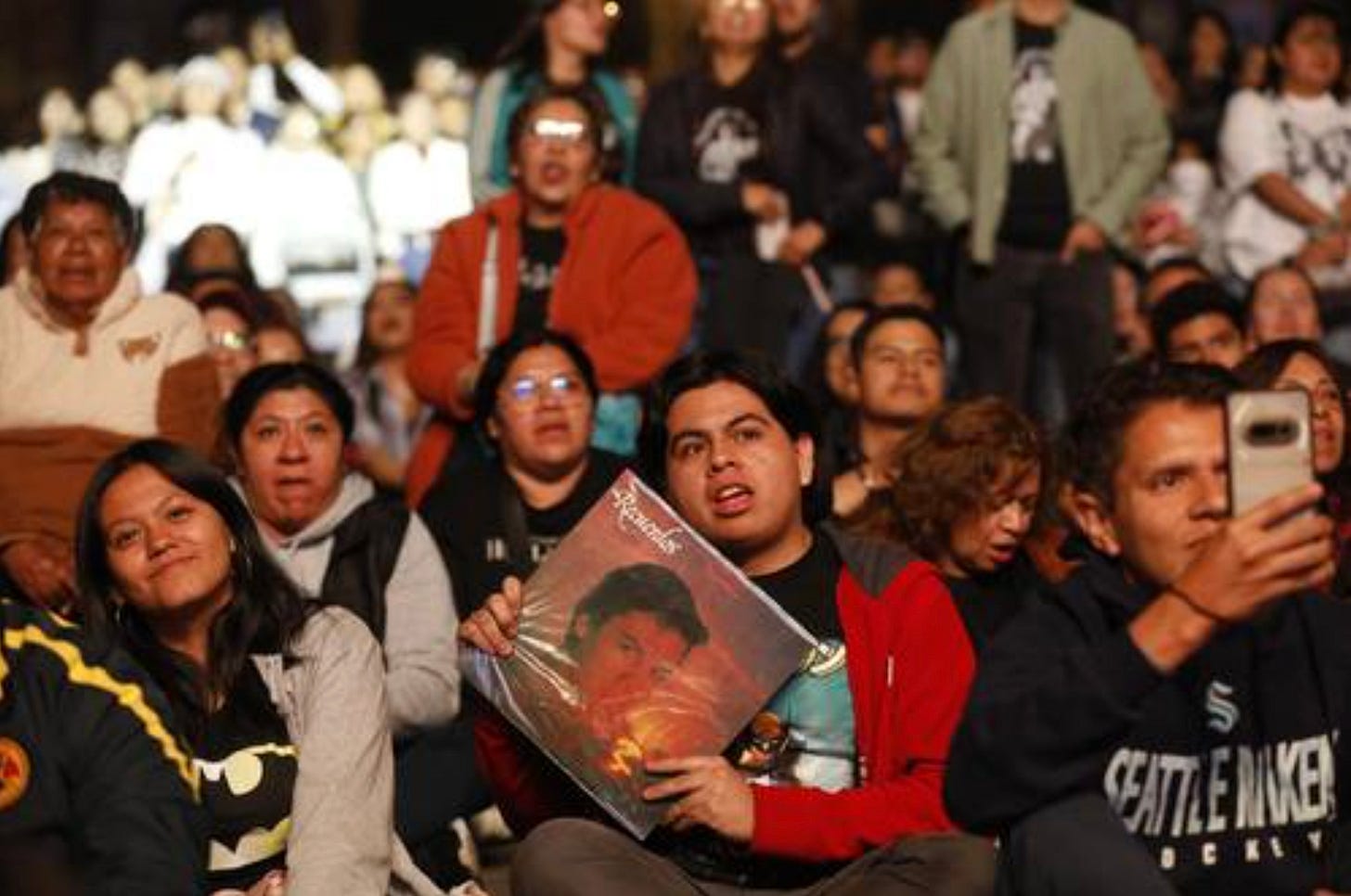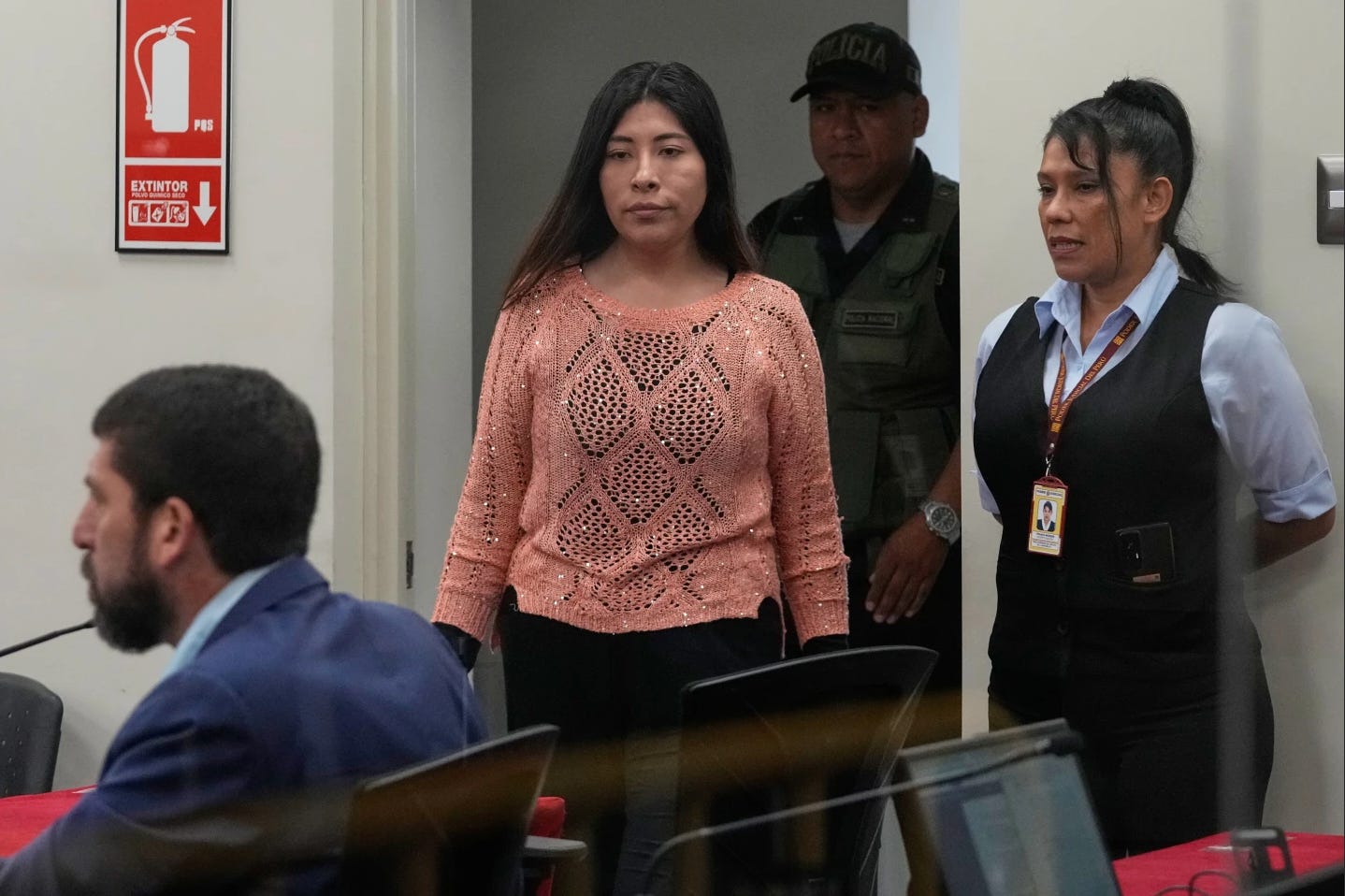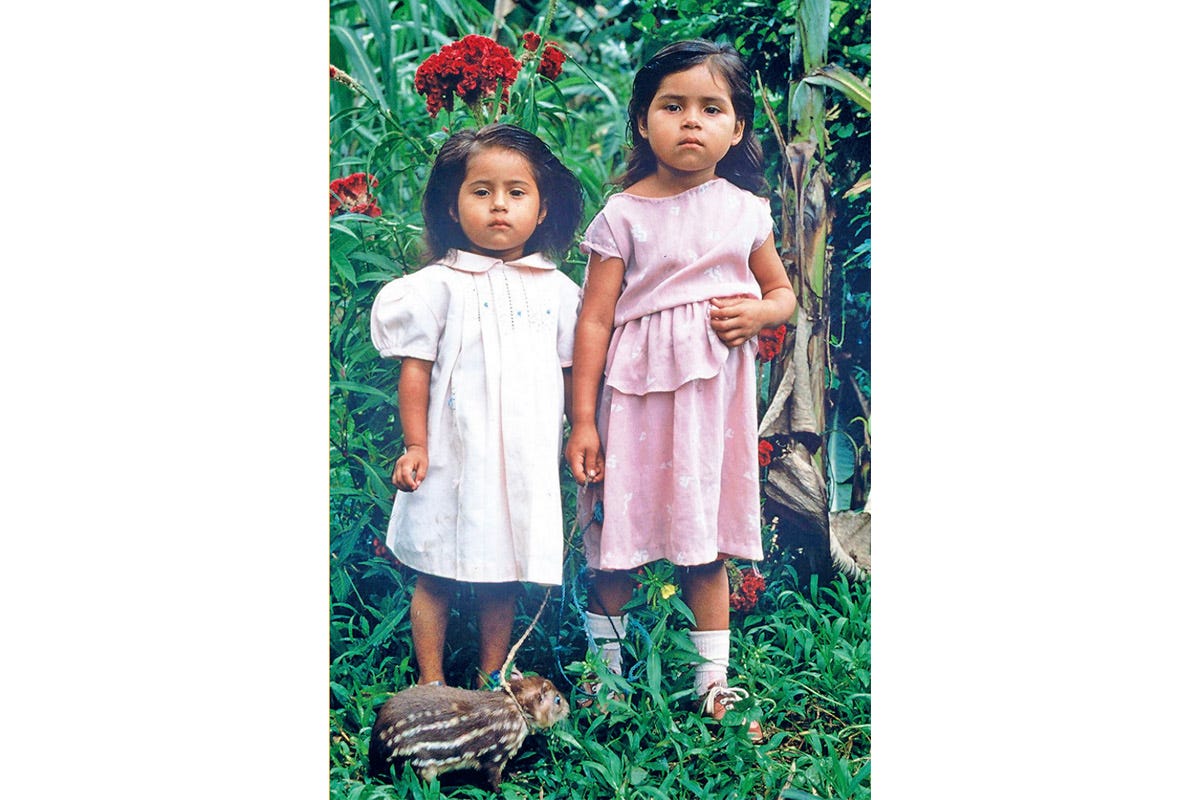Live Art, Art That’s Alive
Also in this edition: Mexico’s asylum policy is put to the test. The struggles for environmental defense in the Isthmus. The rich get richer; workers keep losing labor benefits.
Lea La Jornada Internacional en español aquí.
From Schools to the Zócalo
From small community schools and cultural centers to grand concert halls, museums, universities, and all the way to the country’s main stage, the Zócalo in Mexico City, the performing and visual arts fill the air across México with every rhythm and color of creation and tradition, reports La Jornada.
This month, the sounds of guitars, violins, cellos, guitarróns, trumpets, and harps filled the nation’s largest plaza during the Second World Mariachi Congress. Despite the cold night air, the audience kept asking for more songs. Boleros, ballads, and sons offered moments to remember, bringing back Palabras tristes, the heartbreak anthem made famous by Los Yonic’s, along with Lástima que seas ajena, Acá entre nos, De qué manera te olvido, Volver, volver, and La ley del Monte.
A day earlier, Juan Gabriel resuscitated in that very same plaza, with 170,000 people present to testify that he never really died. The screening of his 1990 concert at the Palacio de Bellas Artes, enhanced with never-before-seen footage from the documentary series Juan Gabriel: debo, puedo y quiero, completely filled the Zócalo. The crowd once again surrendered to the Divo de Juárez, moved by his beautiful and timeless songs, reported La Jornada.
A few days from now, on that same stage, more than a thousand Indigenous children who are musicians will showcase their work in the Cuicallis, “houses of song and poetry” that promote learning, creation, and cultural transmission among children, while also strengthening the use of Indigenous languages. More than 5,000 children participate in 100 Cuicallis located in 46 municipalities across 12 states, as part of the Community Culture program.
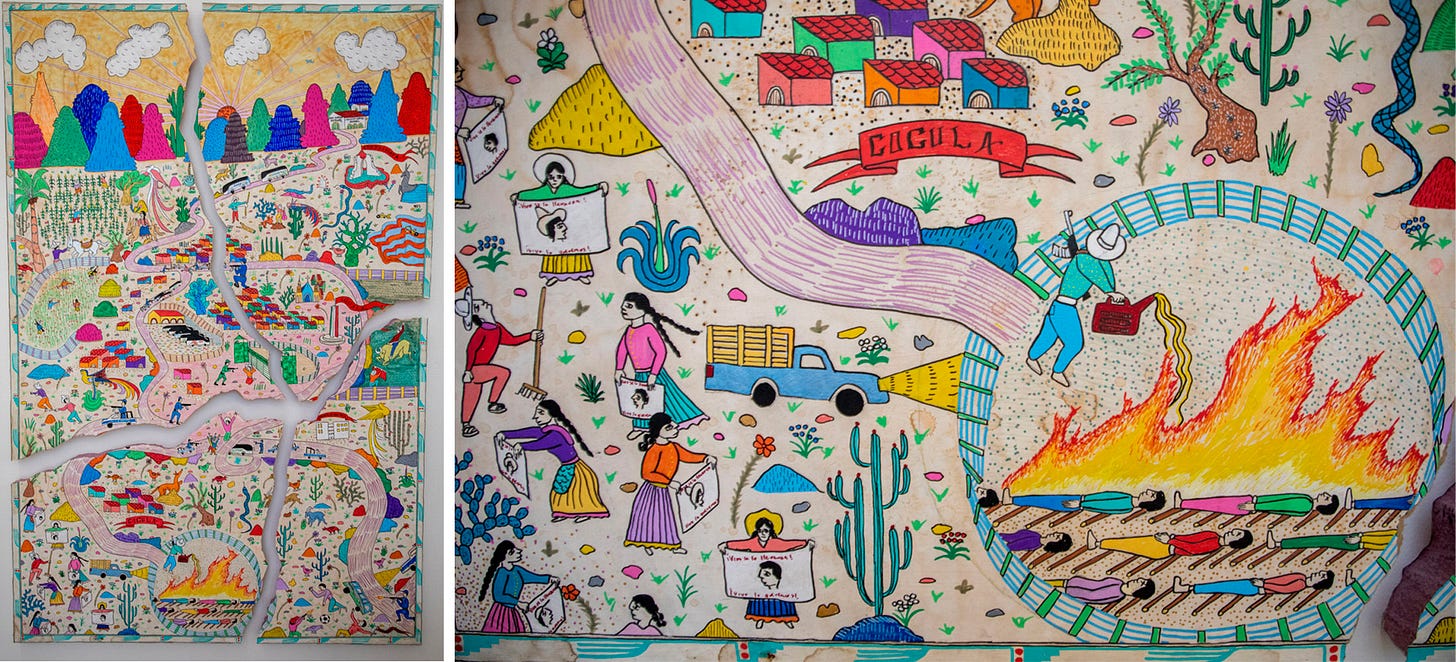
A few kilometers away, at UNAM, the Sersur gathering is taking place, offering performances and dialogues centered on contemporary dance in Latin America and the Caribbean. “There’s a strong element of dance as a social bond,” says Claudia Lavista, head of UNAM’s Dance Department, in announcing the major event. “All Latin Americans dance salsa, merengue, mambo, chachachá. That’s part of who we are culturally, and when it comes to the Caribbean, even more so.”
Meanwhile, the 20th Tamayo Biennial provides clear evidence of the vitality of the visual arts. “Painting is very much alive in Mexico, much more than it was 15 years ago. There were times when the most prominent artistic languages were photography, video, and object art, but today painting is at the center of artists’ discourses,” said curator Tobias Ostrander. “Each work is a world unto itself, with its own techniques, materials, and concepts. From the most traditional to the most experimental painting, artists are exploring new paths and challenging conventions.”
Meanwhile, artists who refuse to be mere historical footnotes are being rediscovered. Luz Jiménez, the Nahua model “who shaped Mexican muralism and helped preserve her culture,” was known “as a model, muse, and an influence for the visual arts that followed the Revolution,” writes Hermann Bellinghausen in Ojarasca. She posed for Diego Rivera, José Clemente Orozco, and Jean Charlot, among others. He adds that she was “an oral storyteller and writer, an embroiderer, an unlicensed teacher, a promoter of Nahua culture, and a collaborator with artists, ethnologists, and linguists.”
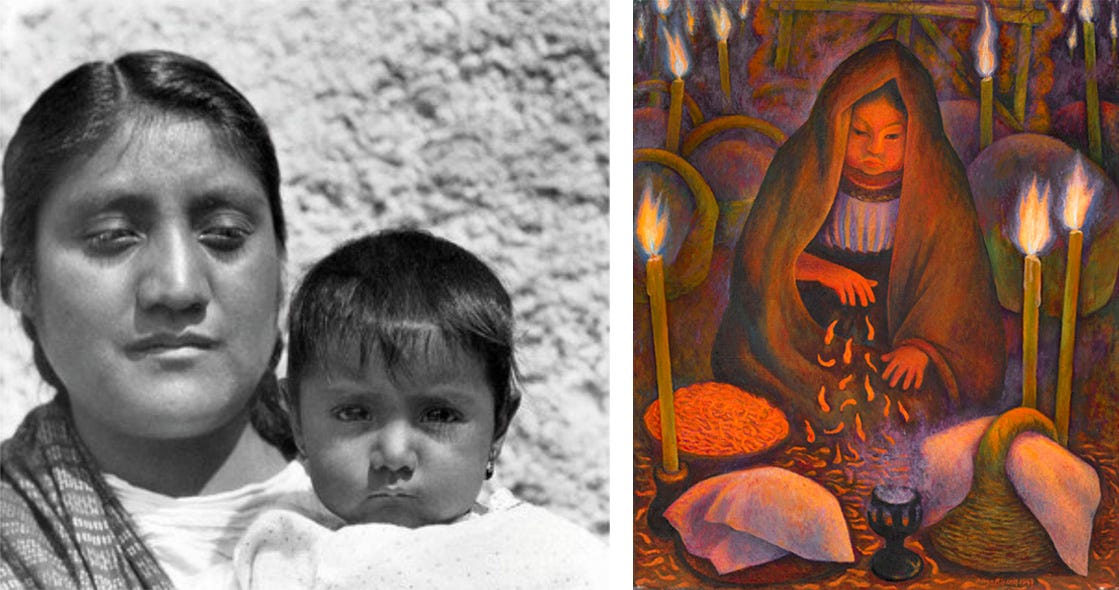
The Quote:
Why are they afraid of Bad Bunny?
-David Brooks, correspondent of La Jornada in Nueva York.
In Case You Missed It
◻️ Mexico’s asylum policy tested with Latin American cases. Mexico’s long-standing tradition of granting asylum to politicians was put to the test again this month when the Peruvian government decided to break diplomatic relations over Mexico’s granting of asylum to the former chief of staff of leftist ex-president Pedro Castillo. In the past six years, diplomatic crises have arisen on three occasions when Mexico exercised its right to protect persecuted former officials, reports Blanche Petrich.
◻️ 10 percent of the planet’s flora and fauna. The struggles for self-determination and environmental protection in the Isthmus of Tehuantepec and its eight ecosystems, which contain 10 percent of the planet’s flora and fauna, are covered in La Jornada Ecológica.
◻️ Migrants call on Sheinbaum to strengthen consular protection. “Mexico cannot remain indifferent to the systematic human rights violations and lack of due process faced by thousands of our fellow citizens,” state more than 100 organizations in the United States and Mexico, mostly migrant groups, in a letter sent to Mexico’s president, Claudia Sheinbaum Pardo. They called for stronger consular protection and defense of human rights.
◻️ The rich get richer, and workers lack sufficient benefits. The fortunes of three of Mexico’s five richest individuals grew between 29 and 80 percent over the past year. Meanwhile, for the rest of the population, labor precarity has worsened in 2025, as jobs with benefits are lost and the number of people without any employer-provided coverage continues to rise.
◻️ The creation of the Mexican state came after that of its peoples. Next year marks three decades since the signing of the San Andrés Agreements on Indigenous rights and culture. Thirty years later, they remain unfulfilled, explains Luis Hernández Navarro. Constitutional reforms come and go, but Indigenous peoples are still not recognized with rights to their territories or direct political representation.
◻️ Children in Palestine. Elena Poniatowska interviews dancer and choreographer Diego Vázquez, who participated in the Global Sumud Flotilla towards Palestine. “What moves me most are the children. As a performing artist, I’ve always worked with young people. I believe artistic education is a right, not a privilege. In Palestine, I saw the conditions in which they live and got involved, especially in the struggle for children’s rights,” Vázquez said.
◻️ Right-wing candidates in Chile. One week before Chile’s general elections on November 16, right-wing candidates are stirring up xenophobia, the language of hate, and fear of crime, as well as denial of the crimes against humanity committed by the civic-military dictatorship (1973–1990).
◻️ The most important woman in Mexico’s history. Malintzin, Doña Marina, La Malinche, is “undoubtedly the most important woman in Mexico’s history,” stated researcher Úrsula Camba. She added that “her decisions, her ability to see beyond the ‘apparent,’ changed the face of the world in geographical, religious, economic, social, and cultural terms.”



